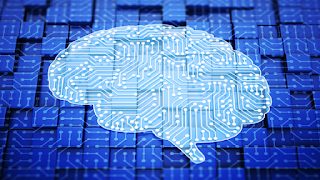Theoretical and experimental physicists have demonstrated that it is possible to build an artificial system that mimics the functions of the human brain, marking an important step forward in neural computing.
The human brain is a "complex computer system" that scientists have long tried to emulate.
While our brains operate using water and dissolved salt molecules, called ions, as their medium, most current brain-inspired computers rely on traditional solid materials.
Now, scientists have explained that the secret lies in the brain's synapse, which transmits signals between neurons that send commands to various parts of the body, including speaking, walking, eating, and thinking.
The team succeeded, for the first time, in creating a small neural synapse measuring 150 x 200 micrometers, based on water and salt, and showing the ability to process complex information, which mimics the functions of the brain.
“We are effectively simulating neural behavior through a system that uses the same medium (salt and water) that the brain uses,” said Tim Kamsma, a doctoral candidate at the Institute for Theoretical Physics at Utrecht University in the Netherlands.
This artificial synapse comes in the form of a small channel filled with a solution of water and salt, where electrical stimulation affects the ions in the solution, which then reflects the activity of nerve cells.
“This suggests that channels can be designed to retain and process information for varying periods, which is similar to the synaptic mechanisms observed in our brains,” Kamsma said.
He added: "It is a crucial advance in the field of computers, which are not only able to mimic the communication patterns of the human brain, but also use the medium itself. This may ultimately pave the way for computing systems that more faithfully emulate the extraordinary capabilities of the human brain."
The results were published in the scientific journal Proceedings of the National Academy of Sciences.
Tags:
activity of nerve cells
brain synapse
brain work
complex computer system
human brain
neural computing
neurons
salt and water
science




Good
ReplyDeleteGood
ReplyDeleteGood
ReplyDeleteHo
ReplyDeleteBzusb
ReplyDeleteGood
ReplyDeleteGood
ReplyDeleteGood
ReplyDeleteInformative
ReplyDelete